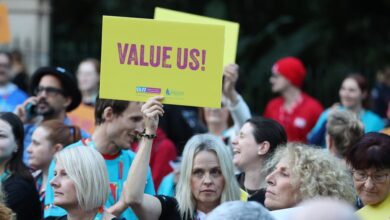Weak jobs data point to further interest rate cuts
While the number of part-time workers rose by 33,600 in November, overall employment fell, the latest job figures show. By Colin Brinsden.
An unexpected tumble in the number of people employed in full-time work justified the Reserve Bank of Australia's (RBA) decision to cut the cash rate for a second month in a row.
Economists say the central bank may even be forced to move again when its board returns from the summer recess in February.
The Australian Bureau of Statistics said full-time workers fell by a hefty 39,900, seasonally adjusted, in November, pushing the jobless rate up to 5.3 per cent from 5.2 per cent in October.
Treasurer Wayne Swan said the small rise in unemployment must be kept in perspective.
"We have a relatively low rate of unemployment, we have a very strong investment pipeline to create jobs in the future," said Swan.
"We have a good budget position, we have low debt, we have good income growth and we have, I believe, an economy which is not matched by just about any other developed economy elsewhere in the world."
Even though the number of part-time workers went up by 33,600 in November, it still meant total employment fell by 6300, when economists had been looking for a 10,000 increase.
Minister for Skills Chris Evans said the data also showed Australia was not immune from the continued turbulence and slowing global growth.
"Despite this slight increase, our unemployment rate remains low, especially compared with the stubbornly high rates of unemployment in many advanced economies," Senator Evans said.
But opposition finance spokesman Andrew Robb said a softening labour market underlined the "enormous risks" posed by the government's new carbon and mining taxes.
"The fact the employment figures for November are weaker is a further sign that our economy is vulnerable to a major downturn in Europe and any reduction in demand for our commodities," Robb, said in a statement.
Opposition employment spokesman Eric Abetz said the Prime Minister Julia Gillard’s rhetoric on jobs creation did not match the reality.
All four of the big four banks passed on the RBA's rate cut in full on December 8.
The Australian Chamber of Commerce and Industry said the reduction in interest rates was intended to support growth in the face of ominous headwinds to the global economy emanating from Europe.
The argy-bargy over interest rates is likely to continue in the new year, with economists predicting a possible further reduction in rates in February or March.
Macquarie Research economist Aimee Kaye believes a combination of weaker corporate profits, budget cutbacks, and generally poor conditions in the employment intensive non-mining sectors, will result in the unemployment rate drifting up towards six per cent by mid-2012.
"Rising unemployment should temper wage pressures, ensure that inflation is not a significant threat to the economy, and give the RBA further room to manoeuvre on rates," she said.
Elsewhere, the Labor party has committed to improving the experience of older indigenous Australians in retirement. The Labor party will consider letting indigenous Australians access superannuation early because of their lower life expectancy.
The ALP National Conference held in December voted in support of a motion for Labor to work with indigenous communities on moving towards retirement strategies, including access to superannuation.
NSW Labor deputy opposition leader Linda Burney says the measure would help disadvantaged families.
AAP
Email: [email protected]





